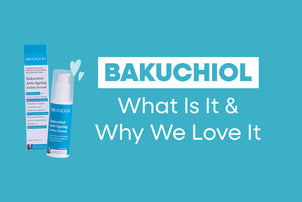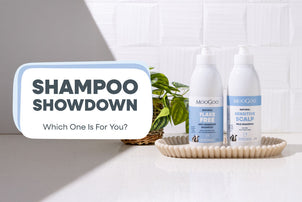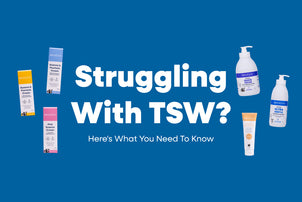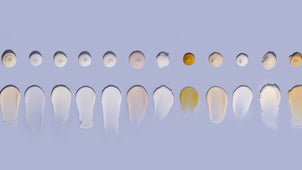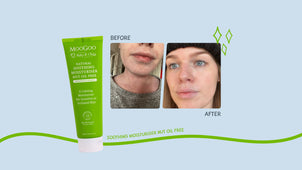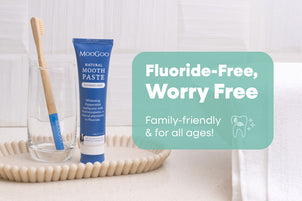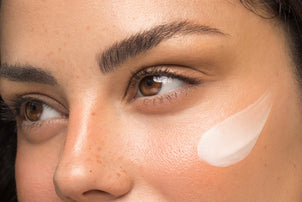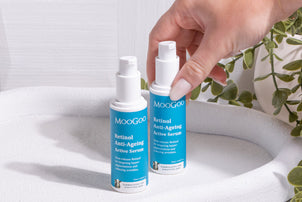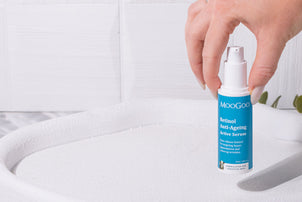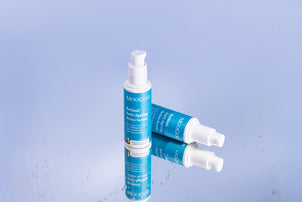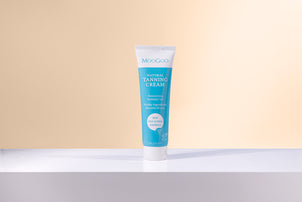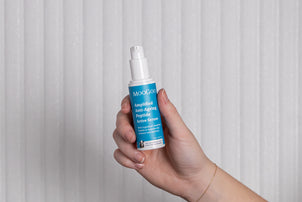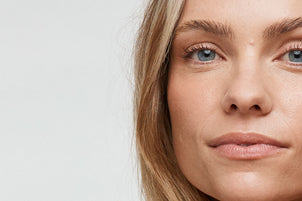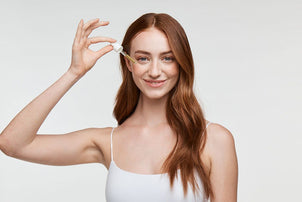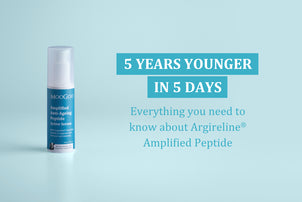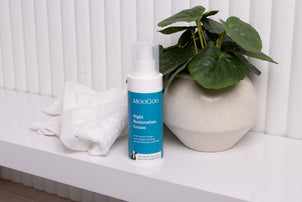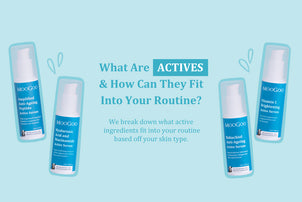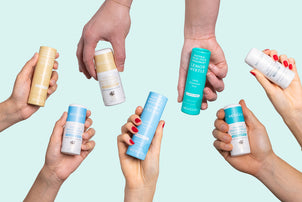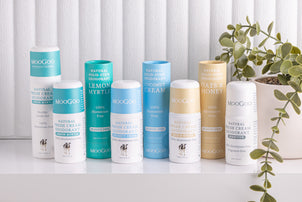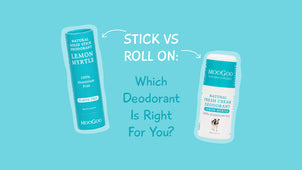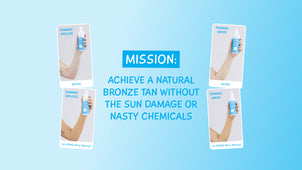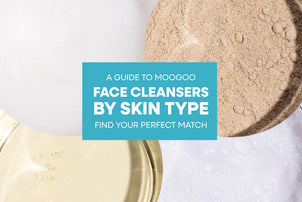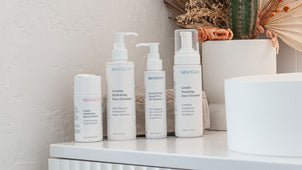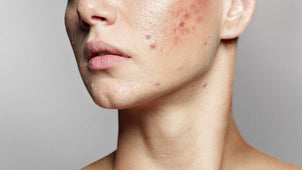
The Great SPF Debate: Chemical vs Physical
Ever slathered on sunscreen, only to end up sunburnt anyway? Ouch. Not only is that a painful few days of peeling, but it’s also a serious reminder - skin cancer is no joke. In Australia, 2 in 3 people will be diagnosed with skin cancer in their lifetime, resulting in over 2,000 deaths every year.
Thankfully, most skin cancers are preventable with proper sun protection. Campaigns like SLIP, SLOP, SLAP have done wonders, but as Aussies who love the great outdoors and sunshine, we need sunscreens that truly work and that we actually enjoy using.
At MooGoo, we’re often asked why we rely on Zinc for sun protection. With more people paying close attention to what goes on their skin, we thought we’d dive into the science behind chemical vs physical SPF and why Zinc-based sunscreens are often the smarter (and gentler) choice.
What Are Physical Sunscreens?

Physical sunscreens (also known as mineral or natural sunscreens) use naturally derived minerals like Zinc Oxide or Titanium Dioxide to protect your skin. They work by sitting on top of the skin, acting like tiny mirrors or umbrellas that reflect UVA and UVB rays away before they can cause damage.
Zinc Oxide, the hero ingredient in all our MooGoo SPFs, is incredibly stable under sunlight and provides broad-spectrum protection.
Just remember: all sunscreens needs reapplying every couple of hours, and after swimming, sweating or towelling off.
What About Chemical Sunscreens?
Chemical sunscreens use synthetic UV filters that absorb UV rays and convert them into heat before they reach your skin. They do work, but they break down faster in sunlight, which means more frequent reapplication.
You’ll often find ingredients like Avobenzone, Octinoxate, Oxybenzone, Homosalate, and Octocrylene - each targeting different UV wavelengths. Because they absorb light instead of reflecting it, you may still notice tanning or burning, even with SPF applied.
Without mineral ingredients like Zinc, chemical sunscreens usually have a thinner, more transparent texture.
Worth knowing: chemical SPFs need at least 20 minutes to start working, while Zinc-based SPFs protect straight away. Handy for those of us who forget until we’re already at the beach!
Sensitive Skin? Go For Mineral!

If you have sensitive skin, Eczema, Psoriasis, Dermatitis, Rosacea or allergies, physical SPFs are the way to go. Since Zinc is a naturally occurring mineral, it's typically hypoallergenic, so for most people, it’s less likely to cause stinging, redness or irritation.
Zinc also has anti-inflammatory properties, which can help calm and soothe easily irritated or acne-prone skin. Many mineral SPFs, MooGoo included, are also fragrance-free and made without chemical preservatives, which are common triggers for sensitivity.
Bottom line? The best sunscreen is the one you’ll use every day, but if your skin is reactive, Zinc is the safe bet!
🛒 Explore & Shop MooGoo Physical Sunscreens
Which Is Kinder To The Environment?
If you care about the ocean (and who doesn’t?), you’ll be glad to know that mineral SPFs are more reef-friendly.
Zinc Oxide and Titanium Dioxide are considered safer for marine life, while some chemical filters (including Octinoxate and Oxybenzone) have been shown to harm coral reefs and disrupt aquatic ecosystems.
In fact, a 2015 study conducted by Tel Aviv University, found that the lowest concentration to see a toxicity effect was 62 parts per trillion - the equivalent to a drop of water in six and a half Olympic-sized swimming pools!
So when you choose a Zinc-based sunscreen, you’re not just protecting your skin, you’re helping protect our planet too.
Why Does Zinc Feel Thicker?

Zinc sunscreens form a protective barrier on your skin, which is why they can feel thicker than chemical formulas.
Traditionally, Zinc Oxide appeared white because it reflects all visible light (think of it like a tiny light reflector). But at MooGoo, we use a special Australian-made Clear Zinc, which is dispersed in Jojoba Oil for a smoother, lighter, more transparent finish.
To apply:
-
Squeeze a generous amount into your hand and warm it up between your palms for 30 seconds.
-
Spread evenly over exposed skin.
-
Give it a few moments to settle. For most skin tones, it blends in clear, creating a nourished and clear layer of protection. On darker skin tones, you may notice a subtle white cast, which is a normal trait of natural Zinc-based SPF.
Water Resistance & Durability
Zinc-based SPFs keep reflecting rays as long as they’re on your skin - they don’t degrade in sunlight. Our SPF 40 (AUSTL 334457) products are waterproof for 40 minutes, but always reapply after swimming, sweating or towelling off to stay fully protected.
Chemical sunscreens can be water-resistant too, but they usually need extra ingredients to help them stick to the skin - not ideal for those who prefer a low-tox routine.
Why We’re Team Zinc
At MooGoo, we’ll always stand by Zinc-based sun protection. It’s gentle, effective and ideal for sensitive skin. Plus, it’s better for the environment and keeps working as long as it’s on your skin.
Yes, it might take an extra few seconds to rub in, but we think that’s a small price to pay for healthy skin and a healthy planet.
Remember the golden rules of sun safety:
SLIP, SLOP, SLAP, SEEK, SLIDE. Slip on sun protective clothing, slop on a broad spectrum sunscreen, slap on a wide brim hat, seek out shade whenever you can and slide on a pair of sunnies. And because sunscreen only works if it’s used properly, make sure you’re applying a generous amount and reapplying often, especially after swimming, towelling or sweating.
Ready to protect your skin the smarter way? Explore our full range of Zinc SPF sunscreens here!


